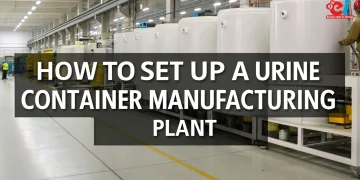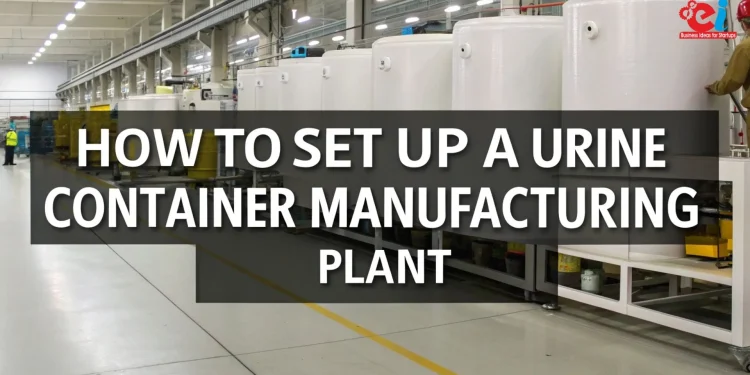The growth of the healthcare sector is directly proportional to the construction of new medical facilities, as the demand for medical disposables increases with each new center. Among the essential disposables, urine container is of paramount importance in diagnostic laboratories, hospitals, clinics, and homecare services. Urine Container are designed to collect, and store urine specimens for medical examinations. Monitoring health examinations and checkups requires strict specimen collection hygiene, tamper-proof containers, accurate sample preservation, and durable containers.
With the rise of rural and urban healthcare systems, enhancing the already existing diagnostic infrastructure is being established as a strong sustainable investment opportunity. In parallel, efforts to increase the public’s knowledge of hygiene and health coupled with an emphasis on cross-contamination focused single-use medical devices is propelling demand not just in India. This shift is creating a surge in demand in other international markets as well.
NIIR Project Consultancy Services (NPCS) can support all entrepreneurs, SMEs, and investors wishing to establish urine container manufacturing units from scratch. NPCS, from project conceptualization, logic, and legally complete all reporting and consultative work necessary for a reliable medical plastic manufacturing unit.
Drivers of Growth and Changes in The Market
Urine container are in high demand within the medical sector, as they are used with increasing frequency in testing and diagnostics. The variety of urine tests offered within diagnostic labs is increasing, aided by government health initiatives like Ayushman Bharat and the expansion of private healthcare. This surge is not restricted to Tier-1 cities, but also includes Tier-2 and Tier-3 towns, rural primary health centers, and mobile health clinics.
There is an increase in the Indian Diagnostics Market which is expected to grow with a CAGR of over 10%, this drives equally important growth in consumption units like containers for urine specimens. Standardized urine sample containers are always in demand among public and private healthcare institutions because of the rise in Preventive Health Check-ups, chronic disease management, fertility treatments, Geriatric care, and mobile diagnostics services.
Urine containers are now being exported from low-cost manufacturing countries like India to Africa, South-East Asia, Middle East and Latin America due to the surge in demand combined with a lack of local production. This export potential makes a urine container manufacturing plant even more lucrative.
NPCS strategically integrates export-oriented business strategies, trade mapping, and packaging compliance into the marketing project outlines for urine container manufacturing to assist industries in penetrating local and international markets.
Related: Plastic Products Manufacturing Profitable Plastic Industries
Design and Characteristics of a Specific Urine Container
Typically, a standard urine container is a cylindrical cup manufactured from medical-grade plastic capable of holding between 30 ml to 120 ml of liquid. These containers find use primarily in urinalysis, pregnancy testing, culture tests, drug tests, and other forms of diagnostics. An effective design minimizes contamination, leakage, and spillage risks during sample collection, storage, and transport.
One of the primary features is a snug and secure screw cap or snap-on lid with a leak-proof seal, a transparent body that allows for specimen visibility, and measurement markings or a barcode label on the side. Most of the containers have been pre-sterilized and individually packed to comply with hospital hygiene protocols. Others come in bulk for large diagnostic centers or laboratories with the capability for in-house sterilization and bulk supplies.
More advanced designs have temperature indicators, tamper-evident lids, and two compartments that allow for multiple tests from one sample. The design and manufacturing process must ensure that all these features are within the required standards while preserving the strict sterility and safety requirements for medical use.
Raw Materials and Material Selection
The main PP: Polymers such as Polypropylene, resist chemicals, are durable, and biocompatible, is the primary raw material for urine containers. Autoclaving can be done on polypropylene, which means it can be sterilized. Sometimes, less rigid or lower-cost alternatives polyethylene might be used.
Depending on the final product specifications, color masterbatches, and UV stabilizers or additives may also be included. High-clarity propylene grades are required to manufacture transparent containers, whilst different pigment masterbatches may be needed for colored lids. Also, elastomer gaskets or specially designed sealing rings are needed for screw bonded, tamper-proof or sealed containers.
The selection process for plastic materials aims to meet US FDA, ISO 13485:2016, and Indian standard institution markings (Bureau of Indian Standards) medical grade plastic requirements. Documentation compliance with healthcare norms includes testing and traceability for each batch as well as certificates from recognized bodies.
NPCS report on the manufacturing of urine containers provides input-output ratios, supplier lists, and quality specification briefs which aids in tracing the materials NPCS has sourced guarantees the quality of their products.
Manufacturing Process
The fabrication of urine containers employs a method known as plastic injection molding. This technique features an efficient, high-speed system for mass-producing standardized plastic goods. Medical-grade plastic granules are loaded into an injection molding machine, which melts and injects the plastic into a precisely tailored cavity at high pressure.
The cap or container is formed when the molten plastic is injected into a mold cavity, cooled, and solidified within it. To achieve mass production, multi-cavity molds are utilized to produce several containers or lids per cycle. The components are molded, and excess materials are trimmed off. Post-molding processes include quality checks for sealing accuracy, dimensional weight, and consistency.
If pre-sterilized containers need to be manufactured, controlled ethylene oxide (ETO) sterilization or gamma irradiation is applied. The containers are packed in bulk concerning pouches, labeled, and set aside for dispatch.
Depending on the scale and level of automation, some units may integrate labeling machines, robotic arms for auto-packaging, or tamper-evident sealers.
In NPCS’s documentation, technical clarity is provided for production setup by including machine layout, flow process diagrams, production cycle times, and project documentation.
Related: What Materials can be used to make Biodegradable Plastic
Machinery and Equipment Requirements
Injection molding machines represent the core of the urine container manufacturing plant, as they must have the capability to precision mold containers and lids with very high yields, or produce ratios. They use machines in the range of 80 to 200 ton clamping forces, depending on the mold size and output.
Critical pieces of equipment are the following:
- Injection molding machine with PLC control
- Multi-cavity molds for container and cap
- Chiller units for mold cooling
- Hot runner systems
- Hopper dryers and automatic loaders
- ETO sterilization chamber (if inhouse sterilization will be performed)
- Packing and sealing machines
- Leak testing machines
- Labeling, printing machine for barcodes, branding, etc.
- Dust-free cleanroom area (class ISO 7 or 8) for final packaging
To comply with the good manufacturing practices (GMP) for medical devices, NPCS states that each piece of equipment must be periodically validated, calibrated, and records kept.
Land, Utilities, Plant Layout
An industrial site of about 5,000 to 10,000 square feet is estimated to be required to set up a medium-scale urine container manufacturing plant. The size depends on the level of automation and production capabilities. The layout must include zones for raw material storage, injection molding, assembly, sterilization, quality control, packaging, storing finished goods, and a separate laboratory for quality control.
Machines require an electrical supply within the range of 100 kVA to 300 kVA. Plant operations require water which is used minimally for cleaning and cooling along with air compressors and vacuum pumps that are required for automation systems for molding seals. The facility must install heating, ventilation, air conditioning (HVAC) as well as proper ventilation, HEPA filters, if cleanrooms are implemented, and are responsible for maintaining Electrostatic Discharge (ESD) Control.
Regulatory Approvals and Certifications
Due to the use and packaging techniques employed for urine containers, they are classified as medical devices of class A or B. As such, they are subjected to regulatory requirements. In India, there is a requirement for registration with CDSCO (Central Drugs Standard Control Organization) as well as adherence to ISO 13485 pertaining to quality systems for medical devices.
Manufacturing is to take place in a facility that has been certified to GMP standards and testing for leachability, sterility, sealing, impact resistance, and overall seal integrity must be performed. For bulk supply to government institutions, BIS certification may be required. On the other hand, it appears that CE certification and US FDA clearance are required for sale in other markets.
If sterilization is performed in-house, AERB and WHO guidelines must be followed. Validation for ETO residue levels, as well as testing, must be performed regularly. All documentation must be kept in a digital format for audit and traceability purposes.
New manufacturers are provided with project kits that contain a check-list for compliance which includes licensing requirements, documentation samples, and compliance testing. NPCS completes the compliance for new manufacturers through the provision of project kits that contain a checklist for compliance including licensing requirements, documentation samples, compliance testing, and regulatory forms.
Export Issues and Opportunities for Development
Due to the export possibility of urine containers, an example of a low weight and high volumetric product with a long shelf life, urine containers are a perfect product for exports. India exports medical disposables to Africa, Southeast Asia, and Latin America where the healthcare infrastructure is being upgraded. Indian manufacturers are poised to capture a larger share of these emerging markets due to low cost products and quality standards.
Ability to change labels and branding to suit the customers needs, customized labeling in other languages, and alteration of the product for sample splitting, drug testing or compatibility for transport media makes urine containers specific to a niche market. They also create unique opportunities to target international customers through online platforms and B2B medical distributors.
As trademarks and export market outlines are made, NIIR Project Consultancy Services provides medical disposables specialized reports that include strategies in exports, target market report, international business leads, as well as specialized reports in trade for medical disposables.
NIIR Project Consultancy Services: Your Guide in the Medical Manufacturing Business
NPCS has years of experience in launching healthcare product ventures, polished through an extensive library of technical and financial feasibility reports. Both first-time and experienced entrepreneurs can make use of NPCS’s consultancy services and enjoy the following:
- Personalized project outlines featuring technical, market, and finance components
- Step-by-step production methods alongside machine and equipment blueprints
- Direction on sourcing raw materials and packaging products
- Quality compliance checklists plus necessary certifications
- Help with licensing, factory installation, marketing, and branding
- Facilitated exports and innovative product branding concepts
Final Thoughts
Increased focus on healthcare diagnostics is set to drive the demand for urine containers. This is a great opportunity for entrepreneurs seeking scalable, profitable, and impactful businesses to get into manufacturing urine containers. Investing in this venture can yield long-lasting profitability while establishing industry recognition due to the low operating costs, high-margin potential, and strong export opportunities.
With the proficient instruction of NIIR Project Consultancy Services, industries can strategically manage the technical, financial, and regulatory intricacies to build a compliable and cutting-edge manufacturing plant for medical consumables that is modern and highly profitable.


























